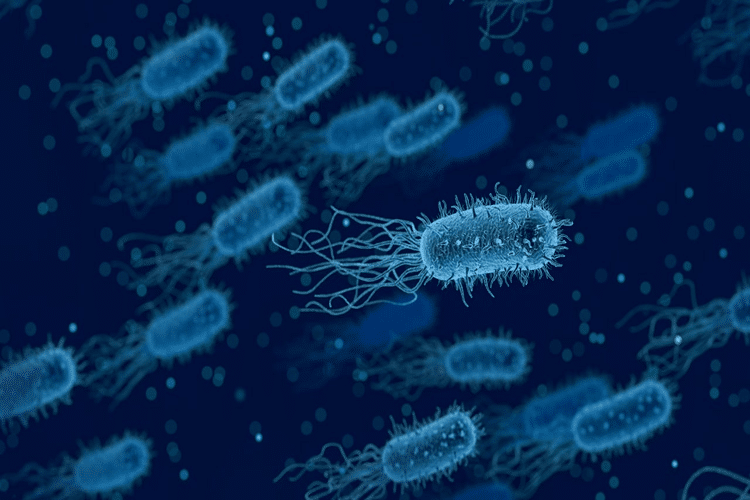
Natural Treatments Used for Digestion Problems and Disturbances of the Gastrointestinal Tract
Papaya contains papain, a remarkable, protein-dissolving enzyme that eases many stomach ailments and is an exceptional aid to digestion. A rich source of minerals and vitamins A, C, and E, papain also breaks down wheat gluten, which may be of great help to those with Celiac disease.
Papaya contains papain, a remarkable, protein-dissolving enzyme that eases many stomach ailments and is an exceptional aid to digestion. A rich source of minerals and vitamins A, C, and E, papain also breaks down wheat gluten, which may be of great help to those with Celiac disease.
Table of Contents
Plant Description
Papaya is a herbaceous tree with a stem of spongy, softwood that is hollow in the center and bears melon-like fruit. It is an interesting tree, in that the male and female parts exist in different trees, and trees may grow to a height of twenty to thirty feet.
The Papaya Tree needs a tropical climate that is dry when cold and wet when warm; consequently, its greatest success appears in the equatorial zone with its warm wet season and cool dry season. It is extremely sensitive to frost, and water-logging will kill the taproot within forty-eight hours. The Papaya tree is especially susceptible to parasites, pests, and diseases.
This fussy plant needs a lot of water but must have good drainage, and it bears most fruit in light, porous, slightly acidic soils that are rich in organic matter. Said to be a native of the Caribbean and Central America, the Papaya is the true papaw that now grows abundantly throughout tropical America, Hawaii, and many other tropical climates throughout the world.
Although grown to some extent in South Florida, the true papaw is not related to the North American papaw. The fruits, leaves, and latex are all used medicinally. The fruit is usually pear-sized and has a central cavity filled with edible, pea-sized seeds.
Medical and Cooking Uses
Papaya Fruit is eaten like a melon, included in salads and when unripe, it is cooked as a vegetable. The seeds are said to have a similar flavor as capers. The green fruit stems and leaves are a rich source of gummy, milky, white latex that contains the powerful enzyme, papain (in latex and exudates).
This protein-dissolving substance has not only been widely used for stomach and digestive disorders but is also included in commercial preparations as a meat tenderizer, chewing gum, and as a stabilizing agent that is used to clarify beer.
Some of the constituents included in Papaya Fruit are the fermenting agent myrosin, another important enzyme (chymopapain), butanoic acid, methyl butanoate, benzyl glucosinolate, linalool, cis- and trans-linalool oxide, alpha-linolenic acid, alpha-phellandrene, gamma-terpinene, 4-terpineol, terpinolene, methyl-thiocyanate, and benzyl isothiocyanate, rutin, resin, lycopene, malic acid, methyl salicylate, calcium, iron, magnesium, manganese, phosphorus, potassium, zinc, beta-carotene, B-vitamins and vitamins A, C, and E.
Papaya is an excellent treatment for digestive disorders and extremely useful for any disturbances of the gastrointestinal tract. Papain, the powerful enzyme in Papaya, helps to dissolve and digest protein, thus easing stomach ailments and indigestion. (Because papain breaks down tough meat fibers, it is often used in restaurants and is the major ingredient in commercial meat tenderizers!) Papaya has been effective in easing heartburn and is given to treat dyspepsia and gastric catarrh. Papaya also stimulates the appetite.
Papaya’s enzyme, papain, not only digests protein, but it extends its activity to digesting carbohydrates. Papain also breaks down wheat gluten, which may be helpful for those suffering from Celiac disease. Those who have difficulty digesting starchy foods, such as bread, cereals, and potatoes, might find great relief in including Papaya in their diets.
Treatments
- Papaya helps to settle a nervous and upset stomach and the queasy feelings often associated with travel and motion sickness. It has also been helpful in relieving morning sickness.
- The papain in Papaya is thought to relieve acute prostate inflammation and may be very helpful in cases of benign prostatic hypertrophy (BPH). Clinical studies in Russia found that papain treatment reversed rectal lesions induced by extreme prostate enlargement in over 97 percent of the men treated.
- Papaya is said to stimulate the bowels in times of constipation and is also believed to be useful in treating inflammatory bowel disorders.
- The papain in unripe Papaya’s gummy milk sap has been known to kill parasites by digesting them and has been used in herbal medicine to kill and expel worms. (Papaya has even been used for termite control.) Papaya’s latex also works as a dewormer by its purgative actions, increasing the movement of intestinal contents.
- The papain in Papaya is currently undergoing studies to investigate its efficacy in treating the herpes simplex virus and herpes zoster (shingles).
- Another papaya enzyme, chymopapain, has been used in the treatment of slipped spinal disc and pinched nerves.
- Extracts of the pulp of Papaya Fruit have shown bacteriostatic properties when tested against Staphylococcus aureus, Escherichia coli, Salmonella typhi, Bacillus subtilis, and other bacteria in vitro.
- Since many stomach problems are the direct result of indigestion, the use of Papaya appears to help prevent many ailments. It stimulates digestive acids and the production of bile, which may also lead to a healthier liver and pancreas.
- Papaya is said to have compounds that act like the female hormone, estrogen and has been used in folk medicine to promote milk production, facilitate childbirth and increase the female libido. In some parts of the world, it is used to induce menstruation and is considered a uterine stimulant.
- In other cultures, Papaya has many medicinal applications. For treatment of poisonous snake bites, Papaya helps to degrade the venom protein in the blood, thus losing its deadly strength. It is used topically to rid the pain of insect stings, and it is said that when applied to heal wounds, it digests dead tissue without affecting the surrounding live tissue. In Jamaica, the gummy latex of the unripe papaya fruit is slowly dripped onto warts and corns, shriveling them, and they fall off. The juice has been used as a facial wash to remove freckles.’s latex also works as a dewormer by its purgative actions, increasing the movement of intestinal contents.
- The papain in Papaya is currently undergoing studies to investigate its efficacy in treating the herpes simplex virus and herpes zoster (shingles).
- Another papaya enzyme, chymopapain, has been used in the treatment of slipped spinal disc and pinched nerves.
- Extracts of the pulp of Papaya Fruit have shown bacteriostatic properties when tested against Staphylococcus aureus, Escherichia coli, Salmonella typhi, Bacillus subtilis, and other bacteria in vitro.
- Since many stomach problems are the direct result of indigestion, the use of Papaya appears to help prevent many ailments. It stimulates digestive acids and the production of bile, which may also lead to a healthier liver and pancreas.
- Papaya is said to have compounds that act like the female hormone, estrogen and has been used in folk medicine to promote milk production, facilitate childbirth and increase the female libido. In some parts of the world, it is used to induce menstruation and is considered a uterine stimulant.
- In other cultures, Papaya has many medicinal applications. For treatment of poisonous snake bites, Papaya helps to degrade the venom protein in the blood, thus losing its deadly strength. It is used topically to rid the pain of insect stings, and it is said that when applied to heal wounds, it digests dead tissue without affecting the surrounding live tissue. In Jamaica, the gummy latex of the unripe papaya fruit is slowly dripped onto warts and corns, shriveling them, and they fall off. The juice has been used as a facial wash to remove freckles.
Precautions
People who take blood-thinning medication (Coumadin, aspirin, etc.) should consult with their physicians before taking this herb, as it may have anticoagulant properties.
Pregnant women should avoid Papaya, as it can be a uterine stimulant, (papain apparently dissolves a protein(s) responsible for adhering the newly fertilized egg to the wall of the uterus). Papaya in all its forms should never be taken by people with a latex allergy (causing anaphylactic shock). Inhaling papaya powder (high in enzymes, papain, and chymopapain, can induce allergies.






